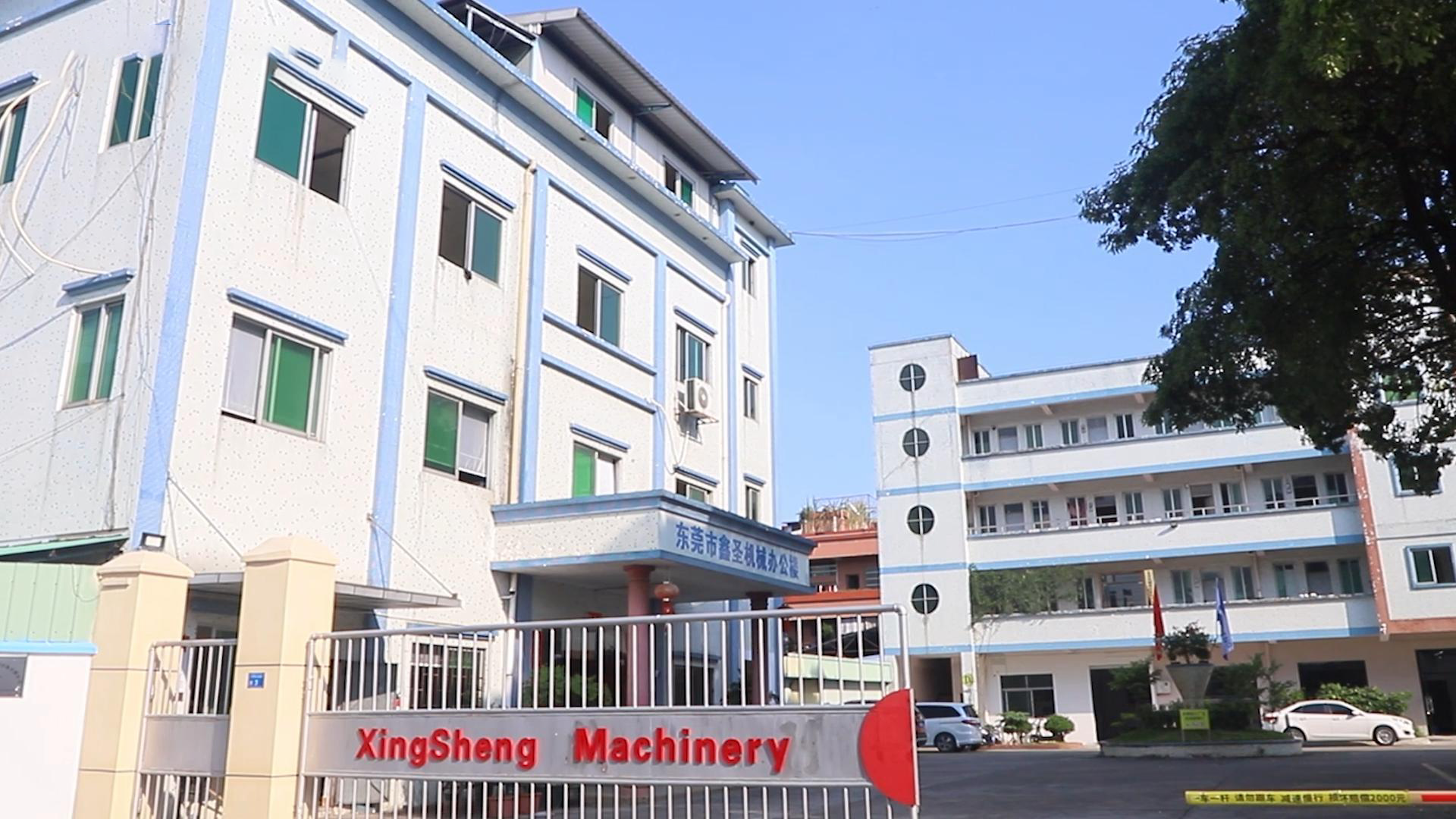Comment la technologie CNC permet-elle la précision et la répétabilité dans le cintrage de fils sur mesure
Le rôle du CNC pour atteindre une haute précision dans les formes de fils sur mesure
Les machines CNC de cintrage de fil d'aujourd'hui peuvent atteindre une tolérance inférieure à 0,1 mm au niveau du positionnement, comme nous l'avons constaté à maintes reprises en examinant des pièces fabriquées pour les voitures. Ces machines utilisent des commandes multi-axes qui leur permettent de cintrer toutes sortes de formes complexes, que ce soit les fils minuscules utilisés dans les dispositifs médicaux ou les attaches spéciales nécessaires pour les avions, tout en maintenant des angles précis à quelques fractions de degré près. Ce qui les distingue véritablement des anciennes techniques manuelles, c'est leur capacité à s'ajuster en temps réel grâce à ces systèmes de rétroaction. Elles apprennent essentiellement comment différents matériaux réagissent lorsqu'on les plie et effectuent automatiquement des corrections. Pour des tâches de fabrication critiques où les erreurs ne sont pas permises, cela signifie que les opérations sont réussies dès le premier essai plus de 98 % du temps, selon les rapports du secteur.
Intégration des systèmes CNC avec l'architecture moderne des machines de cintrage de fil
De plus en plus de fabricants commencent à intégrer directement les contrôleurs CNC dans les parties mobiles de la machine, au lieu de les maintenir sous forme de boîtiers autonomes ajoutés ultérieurement. Selon une étude récente de l'Institut de Plombage de Précision, ce changement réduit le décalage du signal d'environ 73 %, ce qui fait toute la différence lorsque les machines doivent effectuer des corrections en quelques fractions de seconde à vitesse maximale. Ce que nous observons concrètement aujourd'hui, c'est l'association de plusieurs fonctionnalités intelligentes travaillant ensemble. Les mandrins se déplacent grâce à des servomoteurs qui sont parfaitement synchronisés avec la rotation des têtes de cintrage. Des équipements de mesure laser ajustent automatiquement la position des outils après chaque cycle. De plus, de nombreux ateliers ont commencé à connecter leurs interfaces homme-machine au cloud, permettant aux opérateurs de régler les paramètres depuis n'importe quel endroit de l'installation sans avoir à se déplacer constamment entre les machines.
Automatisation pilotée par les données pour des séries de production élevées et constantes
Les cintras automatiques CNC modernes équipés de systèmes de surveillance IoT peuvent produire environ 50 000 pièces par semaine, tout en maintenant les dimensions dans une plage de tolérance stricte de 0,25 mm. Les contrôles qualité automatisés comparent les angles de cintrage et les mesures réels à ceux des conceptions CAO, détectant automatiquement toute déviation supérieure à 50 microns. Les usines ont constaté une réduction de leurs déchets d'environ un tiers en passant des méthodes traditionnelles à ces systèmes intelligents. Nous avons effectivement testé cela sur des lignes de production majeures d'implants orthopédiques, où même de petites améliorations font une grande différence en termes d'économies de coûts et de sécurité des patients.
machines de cintrage 3D de fil : Flexibilité et capacités pour des géométries complexes

Exploration du potentiel de personnalisation des cintras 3D pour des formes complexes
La dernière génération de plieuses de fil 3D permet aux fabricants de créer des formes complexes qui étaient tout simplement impossibles avec les systèmes traditionnels 2D. Ces machines avancées travaillent le fil selon plusieurs axes, parfois jusqu'à cinq points simultanément, ce qui rend possible la réalisation d'hélices complexes, de courbes multidimensionnelles et même de formes inspirées de la nature, avec une précision d'environ 0,1 millimètre. Les fabricants de dispositifs médicaux ont largement adopté cette technologie, notamment pour créer des gabarits chirurgicaux personnalisés adaptés à l'anatomie individuelle des patients. Pendant ce temps, les constructeurs automobiles trouvent toutes sortes de moyens d'incorporer ces fils pliés dans leurs véhicules, allant de pièces structurelles ultra-légères à des composants de suspension spécialisés où la réduction du poids est primordiale.
Comparaison entre machines de cintrage de fil 2D et 3D dans des contextes d'application spécifiques
les systèmes 2D restent économiques pour des formes simples et plates telles que les ressorts et les supports, mais les machines de cintrage de fil 3D dominent les applications nécessitant une manipulation en profondeur. Par exemple, les assemblages complexes de fils dans les actionneurs robotiques exigent souvent 20 à 30 pliages précis sur plusieurs plans — réalisables uniquement avec des systèmes 3D. Le tableau ci-dessous met en évidence les principales différences :
| Caractéristique | machines 2D | machines 3D |
|---|---|---|
| Mobilité des axes | Plan X-Y uniquement | X-Y-Z + axes rotatifs |
| Tolérance | ± 0,5 mm | ±0,1 mm |
| Applications idéales | Clips et crochets produits en série | Prothèses personnalisées, treillis aérospatiaux |
Quand utiliser le cintrage 3D pour des configurations spatiales avancées
Utilisez le cintrage de fil 3D lorsque les conceptions nécessitent des intersections multiplan (par exemple, structures en treillis), des sections variables au sein d'un même composant ou des surfaces libres imitant des formes biologiques. Les fabricants de dispositifs médicaux signalent un prototypage 62 % plus rapide avec les systèmes 3D par rapport aux méthodes traditionnelles.
Étude de cas : Production de composants de qualité aérospatiale avec la technologie de cintrage 3D
Un projet aérospatial récent nécessitait des formes en fil de titane pour les filtres de carburant de satellite comportant 78 nœuds interconnectés. Les machines de cintrage 3D ont atteint une précision dimensionnelle de 99,8 % sur 1 200 unités produites, éliminant ainsi tout post-traitement. Le système à rétroaction fermée corrigeait en temps réel le ressortissement du matériau, maintenant une cohérence angulaire de ±0,05° — essentielle pour la performance d'écoulement du carburant dans les environnements en apesanteur.
Composants clés de la machine permettant une personnalisation spécifique à l'application

Alimenteur, redresseur et tête de cintrage : impact sur la précision et la régularité
En matière de travail de précision, il existe essentiellement trois composants clés qui font toute la différence. Tout d'abord, les alimentateurs de matériau maintiennent une tension du fil constante tout au long du processus, généralement avec une variation d'environ un demi-pourcent sur les machines les plus performantes. Ensuite, on trouve des redresseuses à plusieurs rouleaux qui éliminent efficacement les effets de mémoire du fil, réduisant les écarts à seulement 0,2 mm par mètre de matériau. Et n'oublions pas les têtes de cintrage motorisées par servomoteurs, capables de gérer des angles complexes avec une remarquable régularité, atteignant une précision de l'ordre d'un dixième de degré, répétée à chaque opération. Tous ces éléments fonctionnent ensemble dans ce qu'on appelle un système en boucle fermée. La véritable performance réside dans la rétroaction continue qui ajuste automatiquement les effets de ressort au fur et à mesure qu'ils se produisent. Cela revêt une grande importance lorsqu'on travaille avec des matériaux difficiles comme le nitinol ou le titane, qui ont tendance à retrouver leur forme initiale même après avoir été cintrés.
Unités de coupe et de chanfreinage dans les flux de travail automatisés de formage de fil
Lorsqu'ils sont correctement calibrés avec les bons réglages d'écart de découpe, les systèmes de découpe intégrés parviennent à produire des extrémités sans bavure dans environ 98 cas sur 100 pour la plupart des applications. La dernière génération de machines intègre en réalité des mesures laser et des capteurs de force qui fonctionnent conjointement pour ajuster automatiquement les paramètres de découpe en temps réel. Ce réglage intelligent réduit significativement les pertes de matériaux, entre 12 et même 18 pour cent de moins que les anciens systèmes à configuration fixe. Pour les pièces utilisées dans les dispositifs médicaux et l'équipement aérospatial, les outils de chanfreinage après découpe sont devenus pratiquement obligatoires de nos jours. Ces accessoires permettent de respecter les normes strictes en matière de finition de surface exigées par des certifications telles que l'ISO 13485 pour les produits médicaux et l'AS9100 dans la fabrication aéronautique, garantissant que les composants sont aussi impeccables en apparence qu'en performance lors des inspections.
Conception modulaire des composants pour des mises à niveau faciles et des adaptations spécialisées
Les principaux fabricants ont commencé à utiliser des concepts de conception modulaire qui permettent de passer d'un montage 2D à un montage 3D en seulement 15 minutes, sans aucun outil requis. Ils proposent également des réglages de l'alimentateur compatibles avec des fils allant de 0,5 mm très fin à 12 mm d'épaisseur, ainsi que des capteurs pouvant être facilement connectés pour mettre en œuvre de nouveaux contrôles qualité. Le véritable avantage ressort clairement des données récentes montrant qu'environ les trois quarts des utilisateurs, selon le sondage Fabrication Tech de l'année dernière, choisissent effectivement de moderniser leur équipement actuel plutôt que d'acheter de nouvelles machines chaque fois qu'ils doivent répondre à des exigences différentes de formage de fil. Cette approche permet de réaliser des économies tout en assurant une exécution correcte du travail.
Flux de travail de conception : De la conception à la production dans le formage sur mesure de fil

La formation moderne de fils sur mesure exige un flux de travail méticuleusement conçu pour équilibrer la complexité du design et l'efficacité de la fabrication. Ce processus s'appuie sur des technologies avancées et la science des matériaux afin de répondre à la demande croissante de composants précis dans divers secteurs industriels.
Intégration CAD/FAO dans la transformation de concepts en formes de fil précises
Tout commence par un logiciel de conception assistée par ordinateur, où les ingénieurs prennent ces modèles 3D et les transforment en quelque chose avec quoi les machines peuvent travailler. Puis vient le système CAM, qui dit aux courbureurs de fil exactement comment se déplacer. Ces programmes avancés s'occupent de plusieurs tâches importantes à la fois: ils déterminent le meilleur ordre de flexion pour réduire la contrainte sur les matériaux, surveillent les collisions avec des outils complexes qui se déplacent dans plusieurs directions et vérifient les tolérances afin que les produits finaux répondent aux exigences stri Selon une étude de Ponemon en 2023, tout ce flux de travail numérique réduit les tests de prototypes d'environ deux tiers par rapport à ce qui se passe lorsque les gens programment tout manuellement.
Sélection du matériau et ses effets sur la formabilité et les performances
Le choix du matériau détermine directement la faisabilité du cintrage et la durabilité du produit fini. Les aciers inoxydables de qualité médicale (316L) représentent 42 % des profilés filaires sur mesure, offrant une résistance à la corrosion et un comportement prévisible de reprise élastique. Les progrès réalisés avec les alliages nickel-titane permettent de concevoir des composants à mémoire de forme pour des outils chirurgicaux mini-invasifs, bien qu'ils nécessitent des protocoles thermiques spécialisés lors de leur mise en forme.
Demande croissante de solutions filaires sur mesure dans la fabrication de dispositifs médicaux
La demande du secteur médical pour des profilés filaires personnalisés a augmenté de 78 % entre 2019 et 2023, portée par la nécessité de guides de biopsie miniaturisés exigeant une précision de 0,2 mm de diamètre, les exigences de composants non ferreux compatibles IRM, ainsi que les contraintes d'emballage pour les instruments à usage unique.
Allier précision automatisée et savoir-faire artisanal dans les applications de niche
Selon des rapports récents de l'industrie, les systèmes automatisés gèrent désormais environ 92 % de toutes les opérations de production de formes filaires. Mais il existe encore de nombreuses situations où les mains expertes ne peuvent pas être remplacées. Pensez aux travaux de prototypage complexes nécessitant de minuscules ajustements ici et là, ou à la manipulation de matériaux rares que les machines ne savent tout simplement pas assez bien traiter. Et n'oublions pas les contrôles qualité sur des surfaces plus lisses que Ra 0,4 micron — une tâche que la plupart des machines ne peuvent pas correctement vérifier. Les fabricants qui combinent ces atouts tirent le meilleur des deux mondes. Ils peuvent produire en série d'énormes lots de 50 000 pièces ou plus, tout en conservant la flexibilité nécessaire pour répondre à ces commandes complexes de composants médicaux, réalisées en petites séries mais exigeant une précision absolue.
Section FAQ
Quels types de fil sont couramment utilisés dans le cintrage de fil CNC ?
Les types courants de fils utilisés incluent l'acier inoxydable de qualité médicale pour sa résistance à la corrosion et les alliages de nickel-titane à mémoire de forme pour leur adaptabilité dans des applications complexes.
En quoi les machines de cintrage de fils CNC diffèrent-elles des techniques manuelles traditionnelles de cintrage de fils ?
Les machines de cintrage de fils CNC utilisent des commandes multi-axes et des systèmes de rétroaction automatisés pour atteindre une haute précision et une répétabilité que les techniques manuelles ne peuvent pas égaler.
Quels secteurs bénéficient de la technologie de cintrage de fils 3D ?
Des secteurs tels que l'aérospatiale, l'automobile et la fabrication de dispositifs médicaux tirent grandement profit de la technologie de cintrage de fils 3D en raison de sa capacité à produire efficacement des géométries complexes et des composants personnalisés.
Comment l'automatisation améliore-t-elle le débit de production et la qualité du cintrage de fils ?
L'automatisation permet une surveillance constante de la qualité et des ajustements en temps réel afin d'assurer une cohérence des dimensions, réduisant ainsi les déchets et augmentant les séries de production.
Table des Matières
- Comment la technologie CNC permet-elle la précision et la répétabilité dans le cintrage de fils sur mesure
-
machines de cintrage 3D de fil : Flexibilité et capacités pour des géométries complexes
- Exploration du potentiel de personnalisation des cintras 3D pour des formes complexes
- Comparaison entre machines de cintrage de fil 2D et 3D dans des contextes d'application spécifiques
- Quand utiliser le cintrage 3D pour des configurations spatiales avancées
- Étude de cas : Production de composants de qualité aérospatiale avec la technologie de cintrage 3D
- Composants clés de la machine permettant une personnalisation spécifique à l'application
-
Flux de travail de conception : De la conception à la production dans le formage sur mesure de fil
- Intégration CAD/FAO dans la transformation de concepts en formes de fil précises
- Sélection du matériau et ses effets sur la formabilité et les performances
- Demande croissante de solutions filaires sur mesure dans la fabrication de dispositifs médicaux
- Allier précision automatisée et savoir-faire artisanal dans les applications de niche
-
Section FAQ
- Quels types de fil sont couramment utilisés dans le cintrage de fil CNC ?
- En quoi les machines de cintrage de fils CNC diffèrent-elles des techniques manuelles traditionnelles de cintrage de fils ?
- Quels secteurs bénéficient de la technologie de cintrage de fils 3D ?
- Comment l'automatisation améliore-t-elle le débit de production et la qualité du cintrage de fils ?



